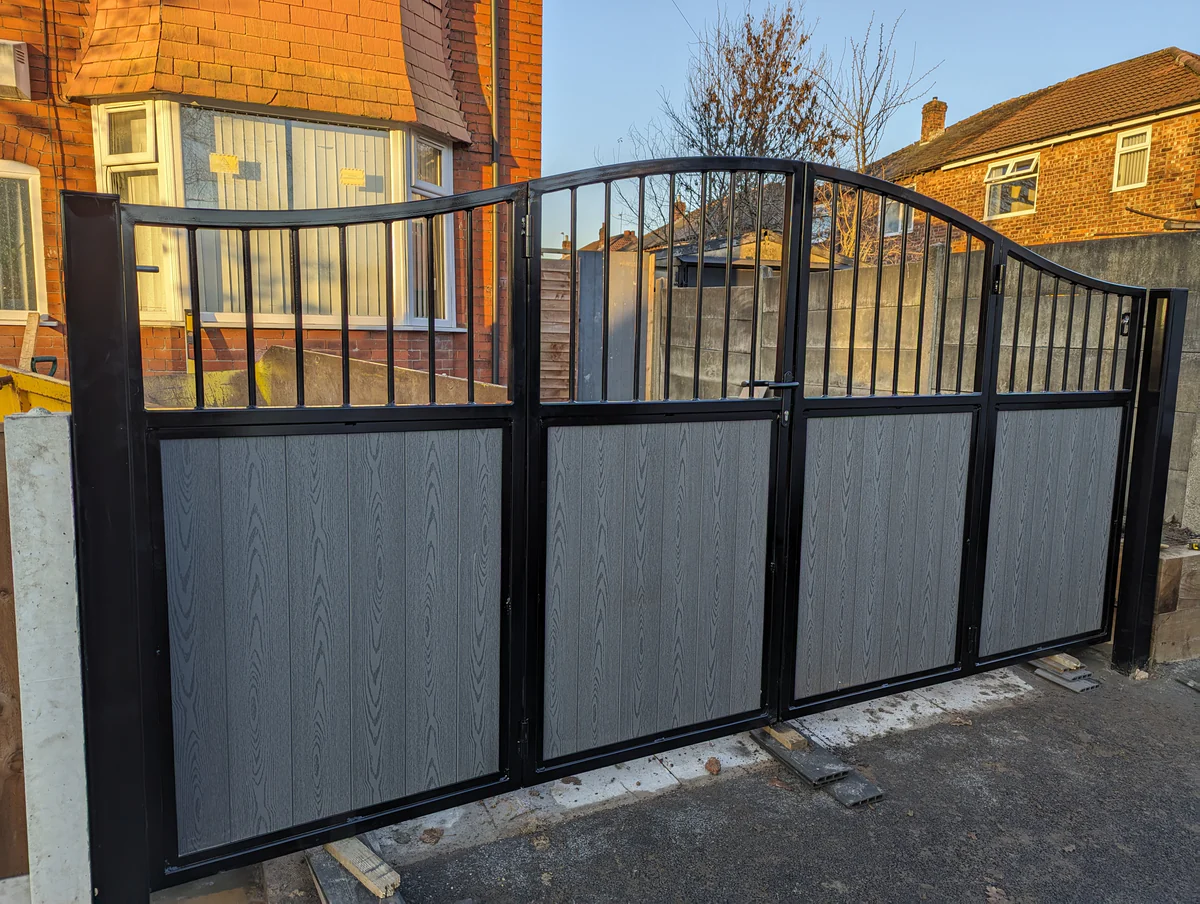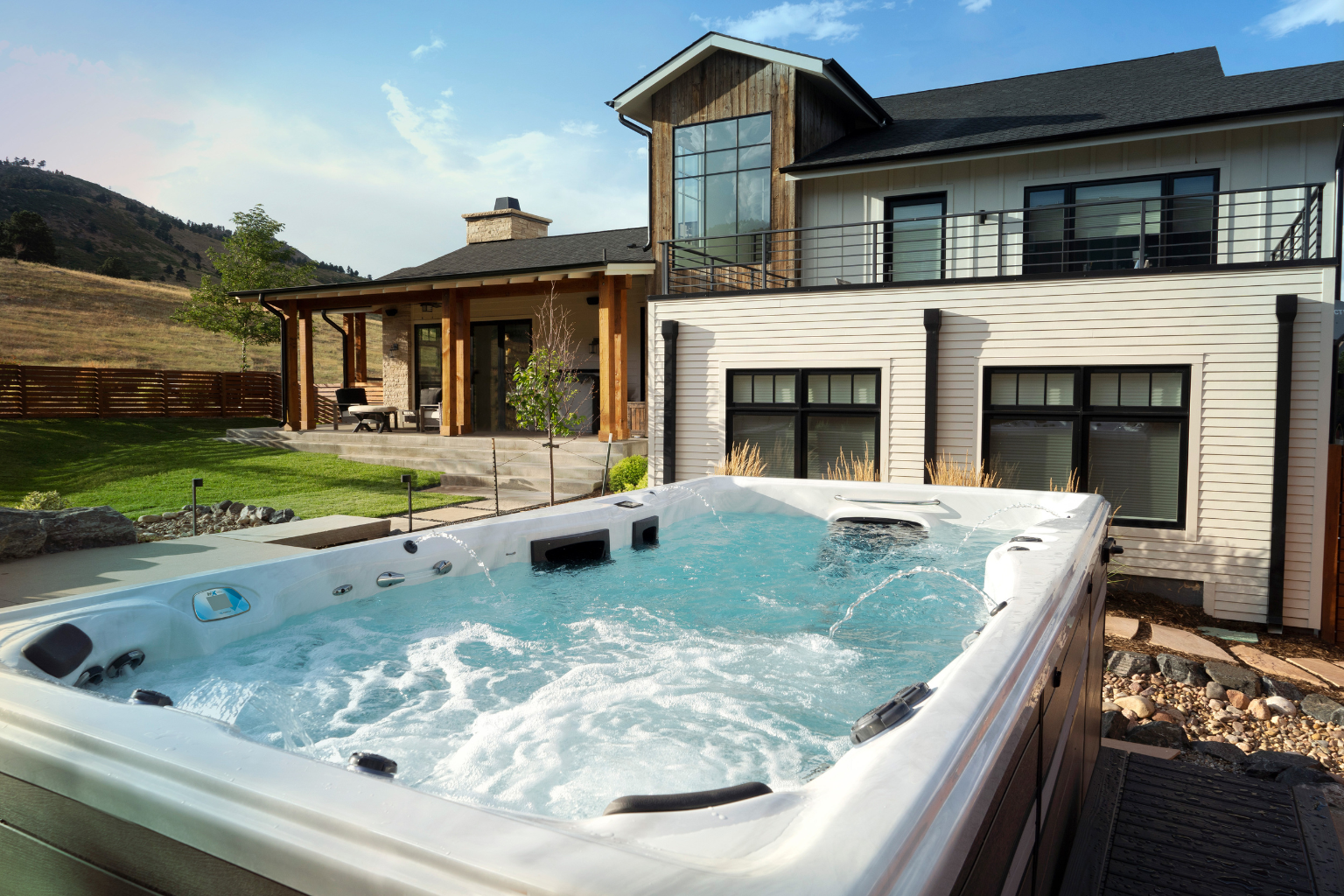Composite gates are a modern solution for those seeking a blend of durability, style, and low maintenance in their gate systems. These gates are made from a mix of materials, often combining wood fibers and plastic, resulting in a product that mimics the look of natural wood while providing superior performance. Composite gates have gained popularity due to their ability to withstand various environmental conditions without the frequent upkeep associated with traditional gates. They offer an attractive, long-lasting option for both residential and commercial properties, making them a versatile choice for many applications.
In this article, we will explore the essential aspects of composite gates, including their benefits, types, installation processes, and cost considerations. By understanding these elements, you can make an informed decision about whether composite gates are the right fit for your needs.
What Are Composite Gates?
Definition and Basic Concept
Composite gates are constructed using a combination of materials, typically wood fibers and synthetic polymers. This blend creates a gate that combines the aesthetic appeal of wood with the durability of plastic. The resulting product is designed to resist common issues such as warping, rotting, and fading, which are often associated with traditional wood gates. The composite material is engineered to provide a strong, reliable barrier that can handle the wear and tear of daily use while maintaining its appearance over time.
Materials Used in Composite Gates
The materials used in composite gates usually include a mix of recycled wood fibers and high-density polyethylene (HDPE) or other plastics. The wood fibers give the gate its natural look, while the plastic components provide resistance to moisture, insects, and UV rays. Some composite gates also incorporate additional additives to enhance their strength and weather resistance. This combination of materials results in a gate that is both functional and aesthetically pleasing, offering a sustainable alternative to traditional wood gates.
Benefits of Composite Gates
Durability and Longevity
One of the most significant advantages of composite gates is their durability. Unlike traditional wood gates, composite gates are resistant to weather-related issues such as warping, cracking, and rotting. They can withstand extreme temperatures, heavy rainfall, and high humidity without deteriorating. This durability means that composite gates have a longer lifespan compared to their wooden counterparts, making them a cost-effective investment over time.
Low Maintenance Requirements
Composite gates require minimal maintenance compared to traditional wood gates. They do not need regular painting, staining, or sealing to maintain their appearance and functionality. Cleaning is typically straightforward, involving just a rinse with water or a mild detergent. This low-maintenance nature not only saves time and effort but also reduces the overall cost of upkeep.
Aesthetic Versatility
Composite gates offer a wide range of design options, making them suitable for various styles and preferences. They can be crafted to resemble natural wood or finished in various colors and textures. This versatility allows homeowners and businesses to select a gate that complements their property’s aesthetic, whether they prefer a classic wood look or a more modern appearance.
Environmental Impact and Sustainability
Composite gates are often made from recycled materials, which contributes to their sustainability. By repurposing wood fibers and plastics, composite gates help reduce waste and minimize the environmental impact associated with producing new materials. Additionally, their longevity means that fewer resources are needed for replacements, further benefiting the environment.
Types of Composite Gates
Residential Composite Gates
Residential composite gates are designed to enhance the appearance and security of homes. They come in various styles, including picket, privacy, and ornamental designs. These gates can be customized to match the architectural style of the home and often include features such as automated opening systems or decorative elements.
Commercial Composite Gates
Commercial composite gates are built to withstand the higher demands of business environments. They are typically larger and more robust than residential gates, providing enhanced security and durability. These gates are often used in industrial settings, shopping centers, and other commercial properties where both functionality and appearance are important.
Custom Options and Designs
Composite gates can be tailored to meet specific requirements and preferences. Custom options allow for unique designs, including personalized colors, textures, and sizes. This flexibility ensures that composite gates can fit a wide range of applications and styles, providing a bespoke solution for both residential and commercial needs.
How Composite Gates Compare to Traditional Gates
Comparison with Wood Gates
When compared to traditional wood gates, composite gates offer several advantages. Wood gates require regular maintenance to prevent issues such as rot and insect damage, while composite gates are resistant to these problems. Additionally, composite gates do not need painting or staining, making them easier to maintain. While wood gates can provide a natural look, composite gates can be designed to mimic wood while offering superior durability.
Comparison with Metal Gates
Composite gates differ from metal gates in terms of appearance, maintenance, and durability. Metal gates, such as those made from iron or aluminum, are strong but can be prone to rust and corrosion if not properly maintained. Composite gates, on the other hand, are resistant to rust and corrosion and do not require the same level of upkeep. In terms of aesthetics, composite gates offer a wider range of design options, including finishes that resemble wood or other materials.
Cost Considerations
While the initial cost of composite gates may be higher than some traditional gate options, their long-term value often outweighs the initial investment. The durability and low maintenance requirements of composite gates mean that they can be more cost-effective over time, as they do not require frequent repairs or replacements. Additionally, the reduced need for maintenance can result in savings on upkeep costs.
Installing Composite Gates
Steps for Installation
Installing composite gates involves several key steps to ensure a proper fit and function. First, measure the area where the gate will be installed to determine the appropriate size and style. Next, prepare the site by digging post holes and ensuring a level foundation. Install the gate posts securely, then attach the gate panels and hardware. Finally, adjust the gate to ensure smooth operation and check for any necessary alignments or adjustments.
Professional vs. DIY Installation
While it is possible to install composite gates yourself, hiring a professional can ensure a more precise and efficient installation. Professionals have the experience and tools required to handle complex installations and can address any issues that may arise during the process. For those who prefer a DIY approach, detailed instructions and guides are often available from manufacturers, allowing for a successful installation with careful planning and attention to detail.
Maintenance and Care
Routine Maintenance Tips
Maintaining composite gates is relatively straightforward. Regularly check for any debris or buildup that could affect the gate’s appearance or function. Clean the gate as needed using water and a mild detergent, and avoid using harsh chemicals or abrasive materials. Inspect the gate periodically for any signs of damage or wear, and address any issues promptly to ensure the gate remains in good condition.
Common Issues and How to Address Them
Common issues with composite gates can include minor scratches or discoloration. These problems can often be resolved with simple cleaning or touch-up methods. For more significant damage, such as structural issues, it may be necessary to consult with a professional for repairs. Ensuring proper installation and regular maintenance can help prevent many common issues and extend the life of the gate.
Cost of Composite Gates
Factors Influencing Cost
The cost of composite gates can vary based on several factors, including size, design, and customization options. Higher-quality materials and intricate designs will generally increase the price. Additionally, costs can be influenced by installation fees, whether you choose to hire a professional or undertake a DIY project. Understanding these factors can help you budget effectively and make informed decisions.
Long-Term Value and Savings
While the initial cost of composite gates may be higher than some alternatives, their long-term value is significant. The durability and low maintenance requirements of composite gates mean fewer expenses over time for repairs and replacements. Additionally, their resistance to environmental damage can contribute to long-term savings, making them a cost-effective choice in the long run.
Conclusion
Composite gates offer a practical and stylish alternative to traditional gate options. With their blend of durability, low maintenance, and aesthetic versatility, they provide a valuable solution for both residential and commercial applications. By understanding the benefits, types, and installation processes associated with composite gates, you can make an informed decision and enjoy the long-term advantages they offer.











